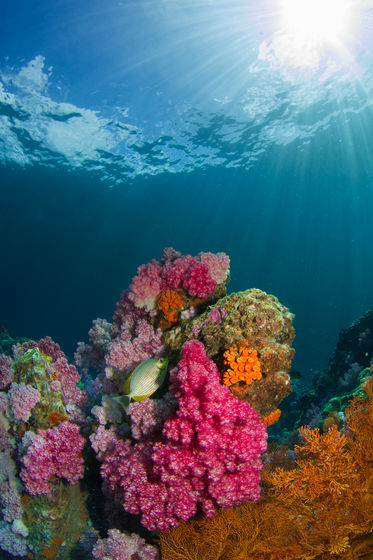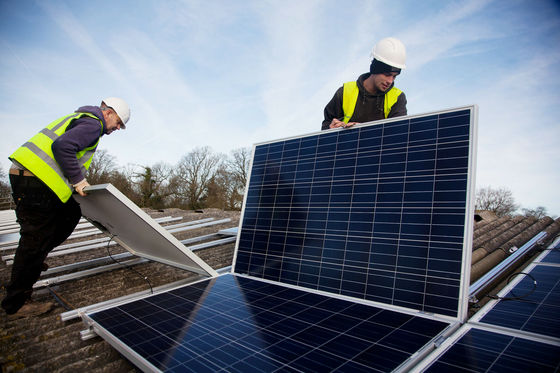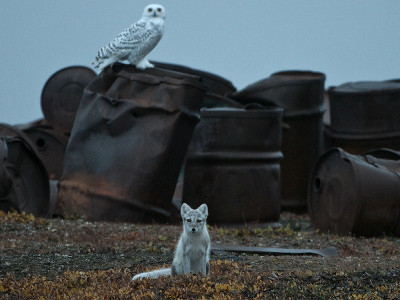What is a picture selection to appeal to people's emotions?

by US Fish and Wildlife Service Southeast Region
A photograph that contains impressive scenes that appeal to historical moments and emotions has tremendous power and if you use these photos well, people around the world can not see it directly, but in fact It is expected that we will actively work on "the problem that is happening in Japan." " Climate change " is a big problem that experts warn about , " Whether we can save humanity is the next three years ", but human beings are not working on this problem firmly, It is pointed out that the cause is "in images used in reports that convey climate change".
BBC - Future - One simple reason we are not acting faster on climate change?
http://www.bbc.com/future/story/20181115-why-climate-change-photography-needs-a-new-look
In articles and columns reporting about climate change, there are many cases where photographs such as "polar bear on ice" and "power plants that emit mokumoku and smoke" are used. However, Adam Corner, who is also a psychologist and director of Climate Visuals, a project aimed at conveying climate change using images, said, "People can not talk with people without people" I pointed out.
In other words, the picture like "Polar bear on ice" which is frequently used in reports on climate change etc. is inappropriate to make people aware of climate change.

by Christopher Michel
Then, what kind of picture is appropriate is that the following photographs showing people in place of a polar bear are more "a picture that makes me think about climate change".

by Roxanne Desgagnés
Corner pointed out that the photos used with these climate change can account for the majority of the reasons people tend to neglect climate change. "Plastic pollution" and "deforestation" that are cited as causes of climate change are difficult to clearly visualize. Gases that cause global warming, such as carbon dioxide and methane, are also colorless and transparent in the first place, so impacts are small and they are hard to use visually.
As a result, in the 1990s reporters and politicians have appealed to climate change using clear-cut pictures such as "Mokumoku and smoke-generating power plants" as a means to clearly convey the situation. By doing so, the world has become easier to understand what is happening due to climate change, but now it has led to the fact that "imminent reality does not reach" Corner That is why I insist.
When reporting about the decline of coral, it is not a photograph showing only beautiful corals ... ...

by Milos Prelevic
The one that the researcher's figure was taken together is more impressive that climate change affects the coral more.

by Amy Humphries
In addition, Mr. Corner says "Because photographs of traditional images are not so appealing" as a reason for changing the photographs used in reports on climate change etc. from what has been used so far . In fact, Mr. Corner is investigating what kind of influence the photographs such as "traditional polar bear with loneliness" and "solar panel nestling in the wilderness" have on the reader side.
Mr. Corner and his team conducted an on-line survey for over 3,000 people in two locations in London, England and Berlin. As a result, photographs such as "solar panels nestling in the wilderness" that have been used in articles related to conventional climate change have been found not to have a large impact on the reader side.

by American Public Power Association
On the other hand, succeeding in giving a big impact to the reader seems to be a photograph of people together, such as "a picture of the person installing the solar panel".

by 10 10
Furthermore, for example, if you want to point out "large-scale meat production with a lot of disposal", it is clear that photographs that emphasize the behavior taken by individuals are inappropriate, leading to a defensive reaction on the part of the reader.

by Sander Dalhuisen
On the contrary, it is known that the following photographs that can image "large-scale disposable meat production" from a more global perspective are more effective.

In addition, the survey revealed that if the picture shows something familiar to the reader, it can be more emotionally appealing about climate change. For example, if you want people from Berlin to be more interested in deforestation, it is more effective to show pictures of forests in Berlin. In addition, the reader does not get a good impression on "funny photos" or "politicians' pictures".
Mr. Corner's research is not a novelty but also a paper that analyzed how NGOs and governments visually express climate change in the past and investigated the impressions that readers will receive when using various kinds of photographs There was a paper that I did.
Mr. Corner said, "What we need to talk about is not about the environment at the time the polar bear became an icon of climate change 20 years ago," and the necessity of choosing a photo that is right for now I am preaching.
Related Posts:
in Note, Posted by logu_ii







